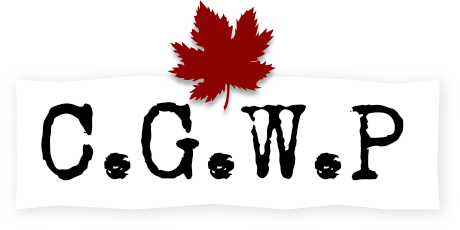
Gunner Kenneth Norman McRae
PERSONAL INFORMATION
MILITARY INFORMATION
- Gunner (Army).
- Gunner (Army).
Military Medal
RESEARCH INFORMATION
Gunner Kenneth Norman McRae, MM, was a law student when he enlisted in the Canadian Field Artillery in November 1915. He was killed by an artillery shell in September 1918, during the Hundred Days Offensive.
According to his attestation Kenneth was born 23 August 1893 in Bayfield, Wisconsin. In the 1901 census of Canada he's listed as the adopted son of John and Matilda McRae, living in the town of Rat Portage in northwestern Ontario. John was born in Bolsover, Ontario, near Lake Simcoe, and his wife Matilda (née McManus) was from New Brunswick. They also had a son William who was four years older than Kenneth and the two boys grew up in the town of Rat Portage (later called Kenora). Lumbering was a major industry there and John worked as a millwright, sawmill foreman and lumber manager. Around 1905 the McRae family moved west to Vancouver, where John was a manager for the Rat Portage Lumber Company. The company had purchased some mills in British Columbia and John was one of several employees who relocated there from Kenora. In 1907 the family was living at 1401 6th Avenue West, their home for the next 25 years.
Kenneth enlisted on 29 November 1915 in Kingston, Ontario. He was a law student at the time and he gave Vancouver as his home address. He joined the 33rd Battery, Canadian Field Artillery, which was recruited in Kingston and Toronto. Before going overseas he was transferred to the 46th Battery. His unit embarked with several other batteries on 5 February 1916, sailing from St. John, New Brunswick on the SS Metagama. The men spent five months training in England and Kenneth was sent to France with his unit that summer, arriving at Le Havre on 15 July. The 46th Battery became part of the 11th Brigade in the 3rd Canadian Divisional Artillery.
The Somme Offensive started in July 1916 and the Canadian Corps moved to the Somme area in August and September. The artillery brigades supported the infantry during operations leading up to the capture of Regina Trench on 11 November and Desire Trench a week later. The 11th Brigade was relieved from the front line on 23-24 November. Over the winter the units rested, trained and received reinforcements to bring them back up to strength. A re-organization of artillery units took place in March 1917 and the 46th Battery ceased to exist, with its men being transferred to batteries in the 9th Brigade. The following month the artillery had a vital role at the Battle of Vimy Ridge (9-14 April 1917).
On 4 June 1917 Kenneth became ill with the mumps and he spent three weeks in the hospital, rejoining his unit on 28 June. Five weeks later he developed an abscess under his arm and it was serious enough that he was evacuated to England for treatment. He had other sores on his arms and legs and he spent eight weeks in two different hospitals, from 14 August to 8 October 1917. After another six weeks with several reserve units in England he was sent back to France on 22 November and assigned to a new unit, the 6th Brigade, in December. The following month he requested a transfer back to the 9th Brigade and he rejoined them on 19 January 1918.
During the spring of 1918 the Canadian units were holding a long stretch of the front line near Arras in France. The men worked on strengthening the trench systems and defences, adding wire entanglements, machine gun emplacements and more gun batteries. The infantry carried out numerous raids and patrols while the artillery regularly shelled the Germans lines. In May the Canadian Corps was pulled from the line to go into reserve and during the summer the troops underwent intensive training in open warfare.
The final period of the war, known now as the Hundred Days Offensive, started with the Battle of Amiens (8-11 August 1918). The Canadian spearheaded the opening assault on 8 August and, supported by the artillery, they advanced twelve miles in four days of heavy fighting. Later in the month they were moved to Arras for the attack on the Drocourt-Quéant Line and after a week of continuous, intense fighting they were positioned in front of the Canal du Nord. Crossing the Canal required careful planning and the Canadian Divisions were given some time to rest and replace their casualties. During that time the gun batteries were within range of German artillery and they were frequently shelled. Kenneth's unit was based on the edge of Écourt St. Quentin, a small village near the Canal du Nord, and on 10 September he was severely wounded by an artillery shell. He was evacuated to No. 1 Casualty Clearing Station and he died of his wounds the next day.
From the Circumstances of Death record for Kenneth: While with a forward section of his Battery, South West of Ecourt St. Quentin, he was severely wounded by a shell which landed nearby about 5.30 P.M. on September 10th 1918. First aid was administered and he was taken to a dressing station, from there evacuated to No. 1 Canadian Casualty Clearing Station, where he died the following day.
Kenneth was posthumously awarded the Military Medal for bravery in battle. He is buried in Duisans British Cemetery in the village of Étrun, about 9 km west of Arras. He's commemorated on the Kenora Cenotaph, the Kenora Legion War Memorial and on page 465 of Canada's First World War Book of Remembrance, on display in the Peace Tower on Parliament Hill in Ottawa.
His parents both died in Vancouver, John in 1920 and Matilda in 1936. His brother William worked in the lumber industry like their father. He married Elizabeth Anstie in December 1915 and he passed away in Vancouver in 1970.